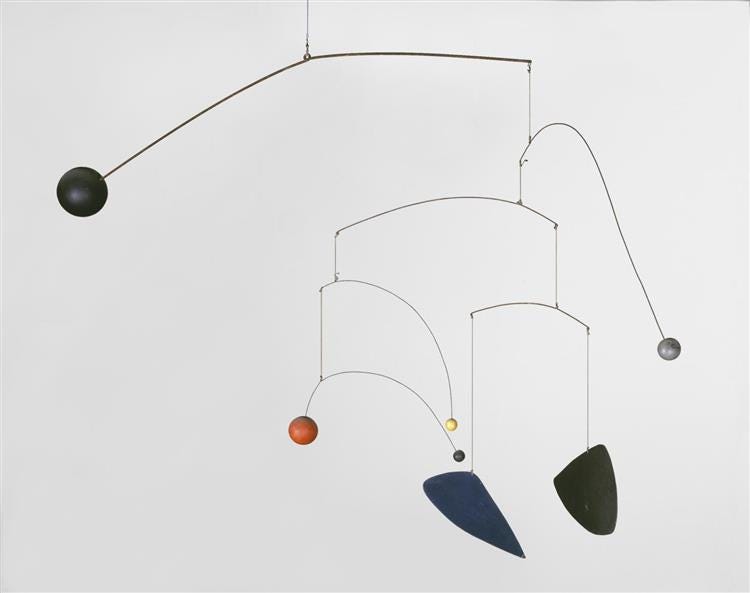
On September 7th, 1932, artist Alexander Calder captivated audiences at New York’s Museum of Modern Art with a groundbreaking kinetic sculpture titled simply ‘Mobile.’
This large, dangling mobile incorporated an actual crankshaft motor, so abstract pieces of molded metal and wire sprang to life in an avant-garde mechanical dance as the custom motor rotated. Mesmerized witnesses encountered a pioneering new art form — sculpture set in motion.
Calder’s exhibition of ‘Mobile’ marked a seminal moment for kinetic art, which incorporates real movement or the illusion of movement as part of their effect. Kineticism had roots in Dadaist Marcel Duchamp’s spinning sculptures and Umberto Boccioni’s striding bronze figures from the early 1900s, but ‘Mobile’ demonstrated new possibilities for motion as an artistic medium. Calder’s balances, mobiles, and standing mobiles would become signatures of the kinetic style.
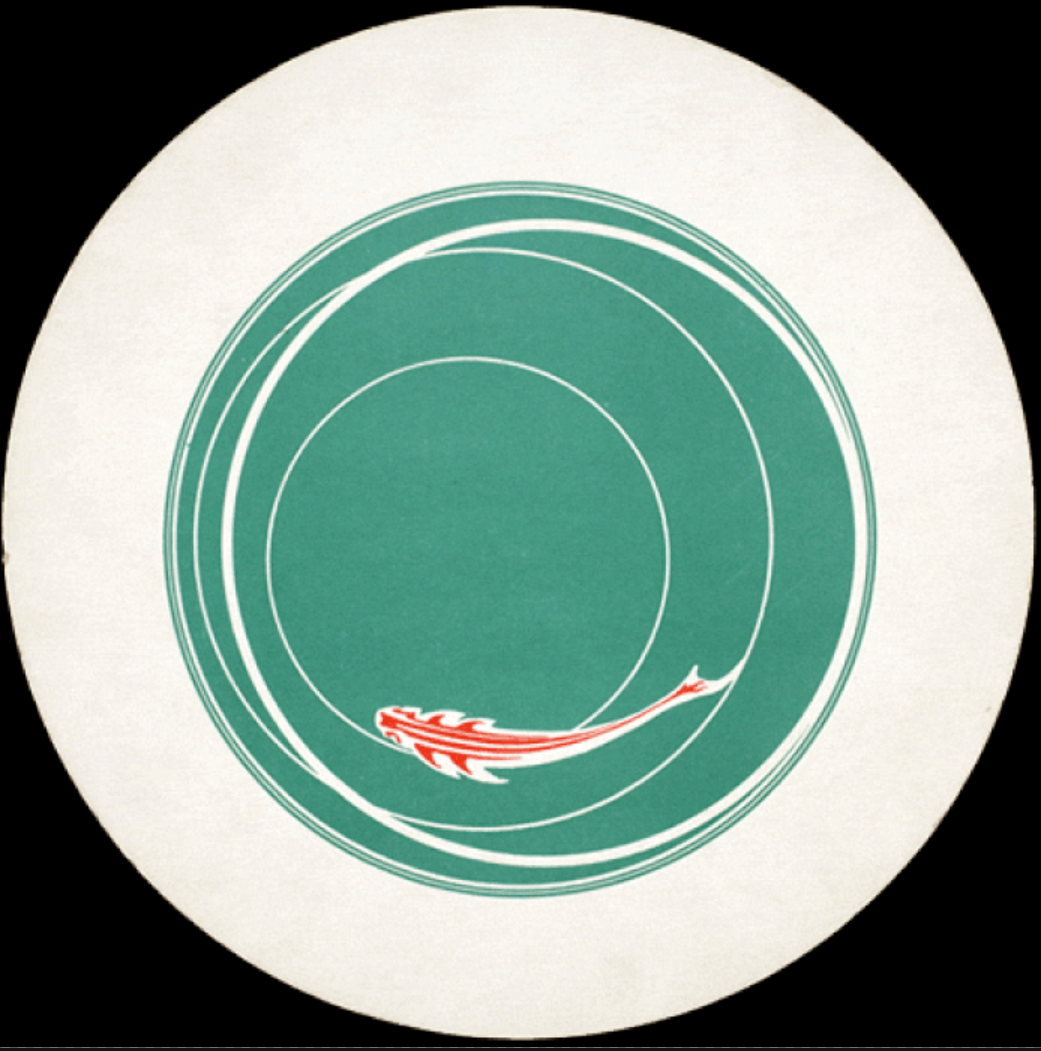

Artists influenced by Calder explored motion through mediums like wind, light, and electromagnetic energy.
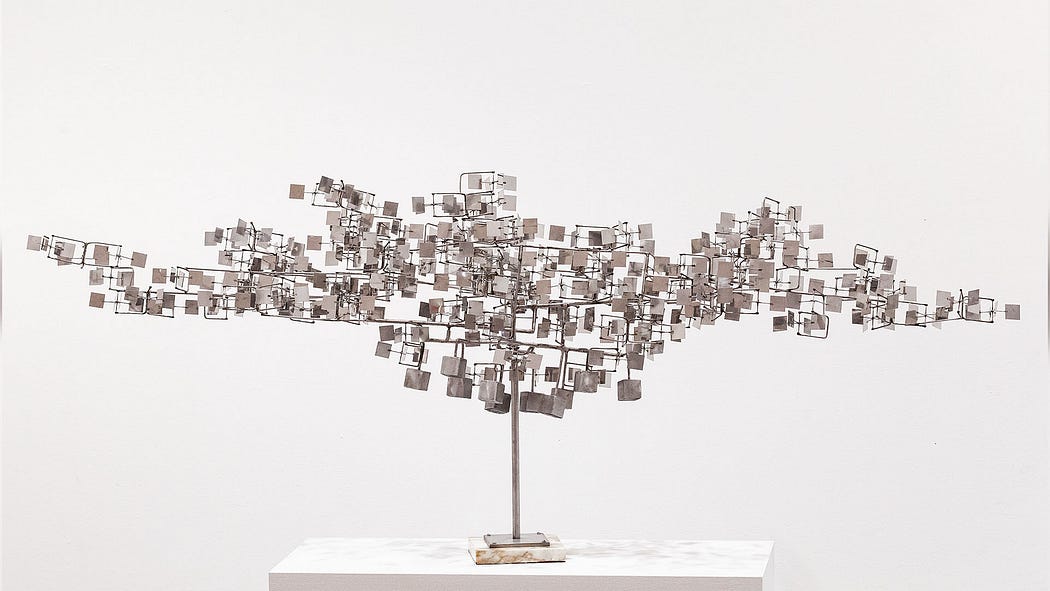
George Rickey constructed giant abstract compositions of stainless steel that twisted seamlessly with only the wind’s currents as their engine.
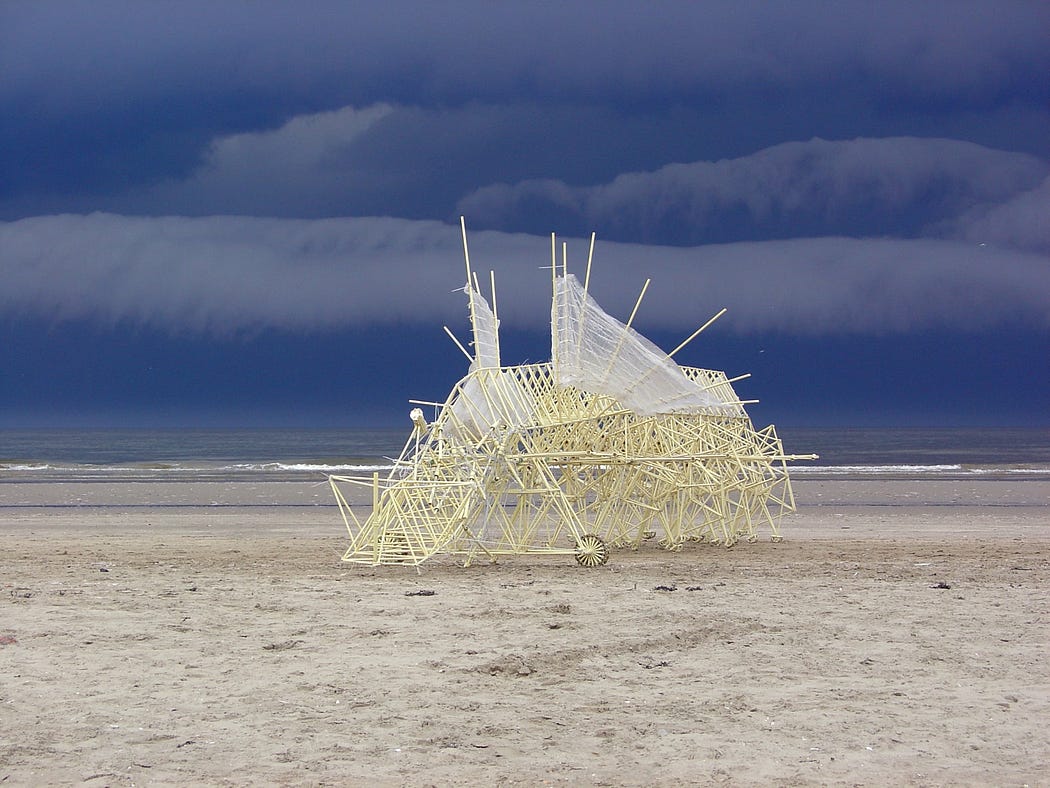
Contemporary creators have continued finding inventive ways to incorporate literal and implied movement into sculpture and installations. Theo Jansen engineers kinetic beasts of plastic tubing that stroll along beaches, driven only by the wind.
Making kinetic sculpture accessible for the home is artist Bruce Shapiro’s imaginative Sisyphus, a sand table with a metal sphere calmly drawing patterns in its wake through a complex balance between magnetism and engineering.

While conventional sculpture presents a fixed, stationary moment in time, kinetic art unfolds continuously through space as motors, natural forces, or viewer interaction activate its mobile parts. Kineticism expresses the dynamic, fluid essence of life and change. Motion manifests time and change, with forms morphing as component pieces relate and respond to one another, cycling in perpetuity to reveal new dimensions.
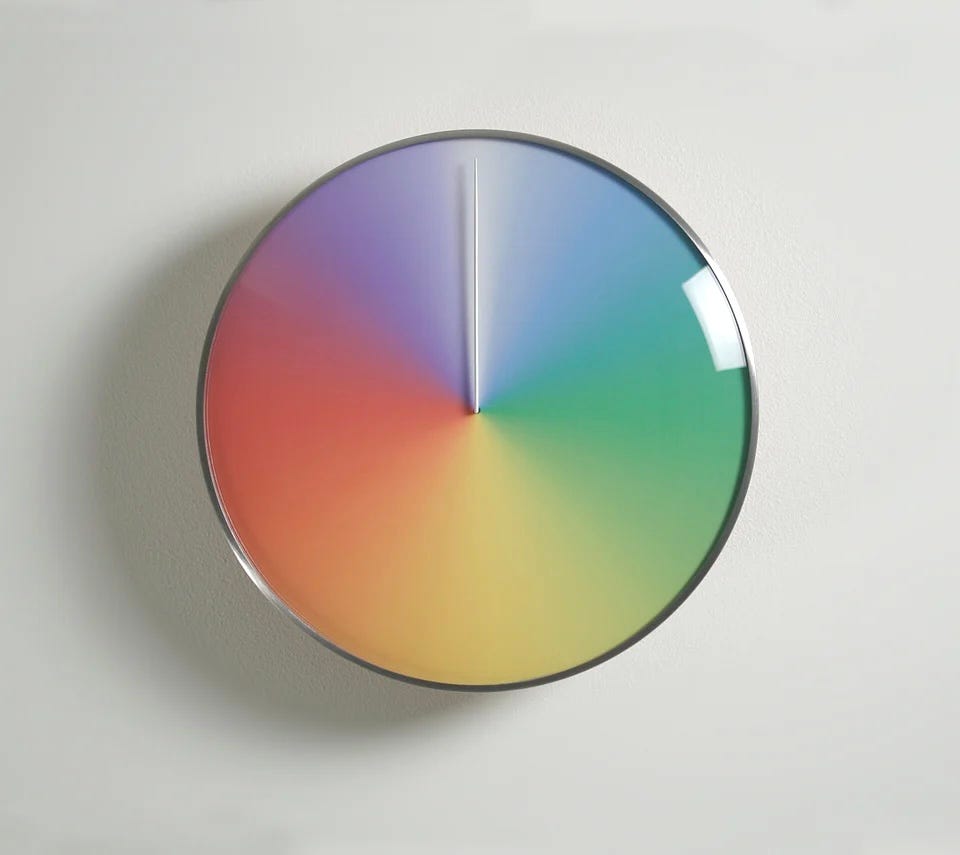
The Present is another kinetic sculpture aligned with this tradition of harnessing motion for artistic impact. The annual rotation of its central hand attunes viewers to the unhurried continuity of the seasons, inviting mindfulness of time’s passage. Its poetic motion transports the spirit, allowing a deeper connection with nature’s rhythms. Both conceptually and mechanically, The Present leverages kinetics as a conduit to meaning.
After the debut of ‘Motor’ on September 7th, 1932, Calder went on to create works of kinetic sculptural works of art hanging delicately suspended by wires or rods, rotating mesmerizingly in response to the subtlest air circulation within a room.

Motion is an all encompassing element of life, the gust of wind which animates the emotions of our hearts and minds. On this day we celebrate the inventive work of Alexander Calder and his piece at the MoMA which introduced kinetic sculpture and the medium of movement to the world.

Leave a comment: